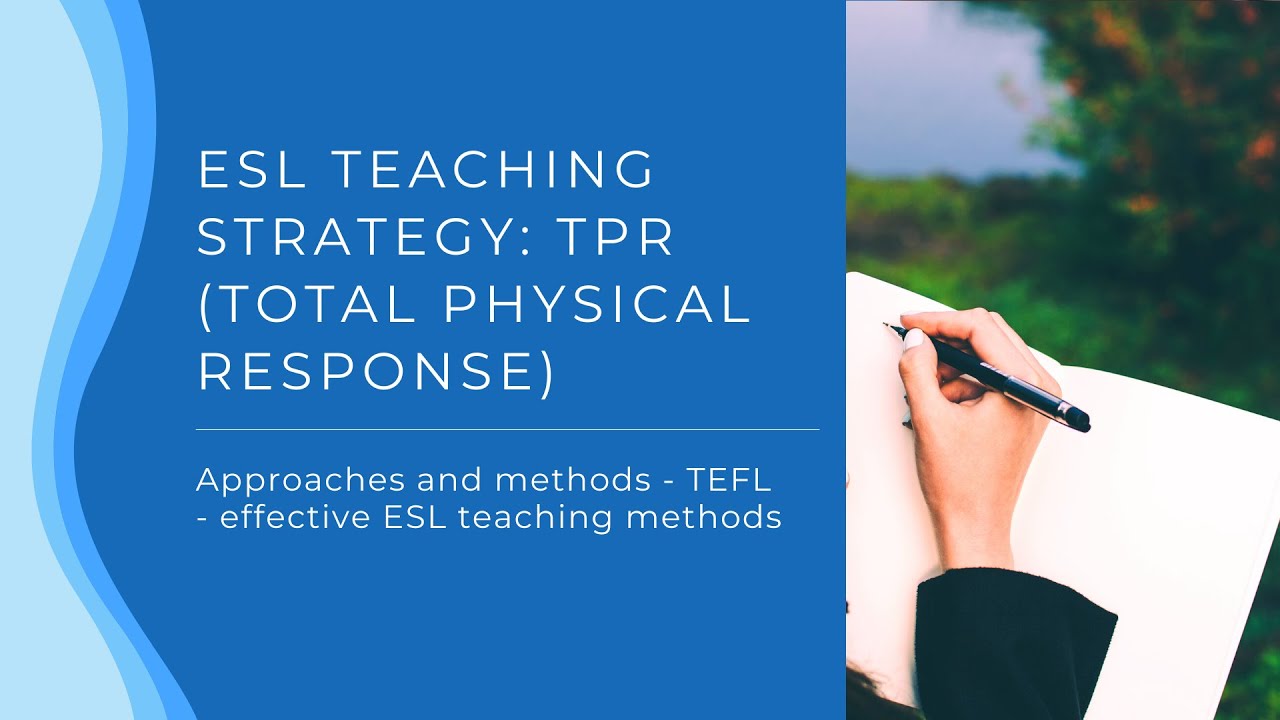
TPR (Total Physical Response) | Approaches and Methods in La...
23K views · Nov 23, 2022 eslactivity.org
Teaching a foreign language can be a challenging but rewarding job that opens up entirely new paths of communication to students including TPR (total physical response). It’s beneficial for teachers to have knowledge of the many different language learning techniques including ESL teaching methods so they can be flexible in their instruction methods, adapting them when needed. That's where TPR or total physical response can come in. This is when students are expected to use their bodies to act out new words that they're learning. For example, sit down or stand behind your friend. TPR works particularly well for teaching young learners, especially beginners. Watch along for all the details you need to know about the most popular foreign language teaching methods. Some of the ones covered are the communicative approach, total physical response, the direct method, task-based language learning, suggestopedia, grammar-translation, the audio-lingual approach and more. This video dives deep into using TPR (total physical response) in the language learning classroom. --------------------------- Learn about another language teaching method (grammar-translation) https://www.youtube.com/watch?v=x4wITfj_v-A -------------------------- More information about total physical response for language teaching: Check out: https://eslspeaking.org/total-physical-response-tpr/ ------------------------- Want to find out more about TPR? Tips for Teaching ESL/EFL: https://amzn.to/3o9kFCj https://eslspeaking.org/total-physical-response-tpr/ https://www.facebook.com/eslspeaking https://www.pinterest.ca/eslspeaking/ https://www.instagram.com/jackie.bolen/ https://www.tiktok.com/@englishwithjackie #tpr #teachingenglishwithjackie #teachingenglish #esl ------------------------------ More details about using TPR with @Teacher Michael https://www.youtube.com/watch?v=nrxgmh9SfQM ------------------------------ Tags: TPR, total physical response, TPR total physical response, total physical response, TPR, language teaching approach, language teaching approaches, language teaching method, language teaching methods, teaching young learners, teaching esl, teaching english to kids Transcript: Hi everybody, this is Jackie Bolen from eslspeaking.org. So today I'm going to talk about a teaching strategy, TPR or total physical response. This is basically where you give a command or a directive and then students have to physically act it out. It could be something like touching your head or picking up your book, putting your pencil on the desk, opening your book, etc. It combines language learning plus physical movement. It can make, in a lot of ways language learning more memorable. It takes it from the brain, only in the brain, kind of this abstract thing, learning a language and it turns it into something physical and tangible as well. I think it uses different pathways in the brain and yeah, it just makes it more memorable. It's best for young learners. I would use this often in definitely like preschool or kindergarten classes or with elementary school students. They love standing up, moving around the classroom, and doing stuff like this. Something that I love using TPR with is prepositions: in, on, under, behind, etc. I would have the students go with a partner in most cases and I would say stand behind your partner. Who's in front, who's behind and touch your partner's right arm, something like that. So that's not an example of prepositions but that's a command. One game that works really well for a total physical response is Simon says. I'm sure you know it. So you say Simon says, touch your arm. Simon says stand on one leg. And students have to do it but if you say to stand on one leg and someone does it, they are out of the game because you didn't say Simon says. Try that out. That's kind of a nice way to use TPR in your classes. Another situation in which I'd use TPR with young children and would use it as a routine to start off my class. I love doing a routine. I talk about the weather. I talk about the day of the week. I talk about what time it is and how people are doing. And then I might give some simple commands like stand up, sit down, turn around, touch something yellow, etc. Why use TPR? Well, it gives some energy to the class. I find that when students are sitting down for too long it gets tiring, it gets boring, so yeah people just need a bit of a break from that. So standing up and actually doing something physical can be a nice way. And I love that this combines something physical with also language learning. It also makes vocabulary, new vocabulary more memorable. Timestamp: 0:00 Intro 0:10 What is TPR? 0:27 Why use total physical response? 0:47 Ideal for young learners 1:01 What about TPR with adults? 1:24 Ideal for teaching prepositions 1:48 Simon says and TPR 2:11 Routines and TPR 2:33 Why use total physical response? 3:11 Conclusion
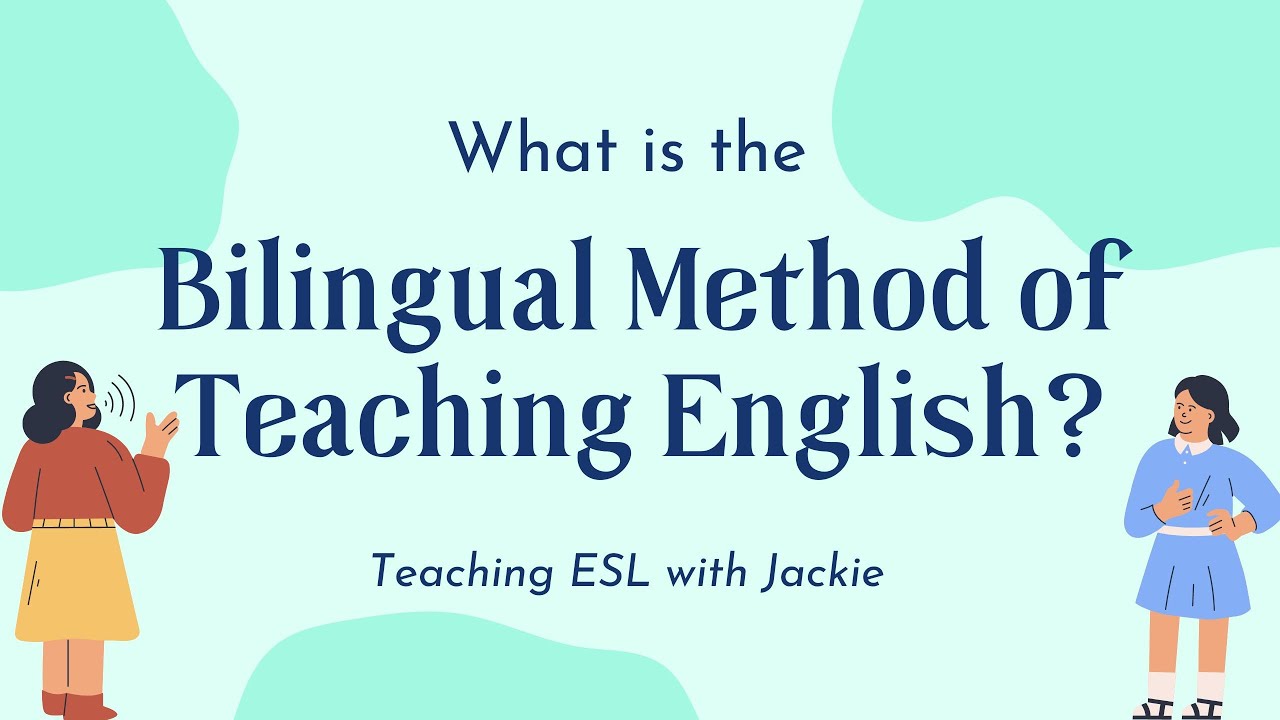
What is the Bilingual Method of Teaching English? | Approac...
38K views · Nov 22, 2022 eslspeaking.org
The Bilingual Method allows the teacher and students to use two different languages; one is the target language to be learned and the other is their native language which is used to achieve the target language English. Watch the full video to learn what the Bilingual Method is and the pros and cons of teaching this method. ------- • Check out this blog post for more details on the bilingual approach to teaching: https://teachinginkoreanuniversity.com/bilingual-method-of-teaching/ • If you liked this video, watch my Presentation practice production (PPP) video here: https://youtu.be/5JTdBLKNyWg • If you like my teaching method videos, you might enjoy: How to teach an ESL class (English as a Second Language) by @Etacude English Teachers https://youtu.be/oYCNd_NPvkE ------ Check out my Tips for Teaching ESL/EF book: https://amzn.to/3PgRsla https://www.facebook.com/eslspeaking https://www.pinterest.ca/eslspeaking/ https://www.instagram.com/jackie.bolen/ https://www.tiktok.com/@englishwithjackie?lang=en #esl #teachingenglishwithjackie #teachingmethod ------------------------------------------------------- Even more Ideas for the TEFL Classroom: https://eslspeaking.org/ -------------------------------------------------------- Transcript for the Bilingual Method: I'm going to talk about the bilingual method of teaching a language is. First of all, what is the bilingual method? It's when you use two languages in a class to teach a language. So for example, if you're teaching in Korea, the students would use Korean as their mother tongue and then you would also be using English in that class. So how does it work? Well, the explanation is in Korean or Japanese—the grammar rules and the vocabulary but then the rest of the class is conducted in English. What are some of the pros of the bilingual method? Well, first of all, it can help students achieve fluency because most of the class is conducted in English. There's just a little part, the explanation part that is conducted in the mother tongue but then they're spending the rest of the class focused on English. It can save time so if you are explaining a complicated grammar rule (https://www.youtube.com/watch?v=D2SRvoaB6f4&) or a vocabulary item just using a little, little bit of their native language or having maybe a co-teacher or something like that, that would use a simple explanation in the native language. The next pro is accuracy. So this can help students achieve greater accuracy because they've had a good explanation of what the grammar point is. Or, what that vocabulary item is. The next pro is that it's easy to teach. This means that a lot of teachers can use this method. For example, if someone is not that confident in English but they are teaching English, they might not be able to explain quite complicated grammar rules in English. That's not that easy to do actually, but if they can explain it in their own native language that can really help them and can help the students. What are some of the cons of the bilingual method? First of all, it can lead to a bit of confusion if you're switching between English and then another language. Maybe students aren't sure about exactly when they should be using each language and they may try to use their native language when they actually should be using English in kind of the production phase of the class. Another con is that it's better for beginners, rather than higher-level students. Beginners may want a class where the teacher is explaining grammar things in their native language. The next issue is there might be some pronunciation issues. This can lead to people kind of like learning English through their own alphabet which is a bit of a struggle sometimes. So learning English through English is actually a great way to prevent that because they're always separate and they would never be taught together. And the next thing is that you can kind of find some examples of blended language. So this is where students will kind of use a mix of two different languages at the same time. Like English or Korean instead of just walking into class and then they know it's all English, all the time. That's the bilingual method. There are certainly some pros and certainly some cons. Timestamp Bilingual method 0:00 Intro 0:09 What is the bilingual method? 0:30 How does the bilingual method work? 0:42 Bilingual method pros 2:03 Bilingual method cons 3:39 Conclusion Tags: Bilingual Method, What is the Bilingual Method, the Bilingual Method of Teaching English, bilingual approach, types of bilingual, bilingual method, advantages of bilingual method, disadvantages of bilingualism, what is bilingual, new methods of teaching english language, methods in teaching, language teaching method, first day of class, class planning, Language Teaching, methods in teaching English, methods in English, teaching grammar
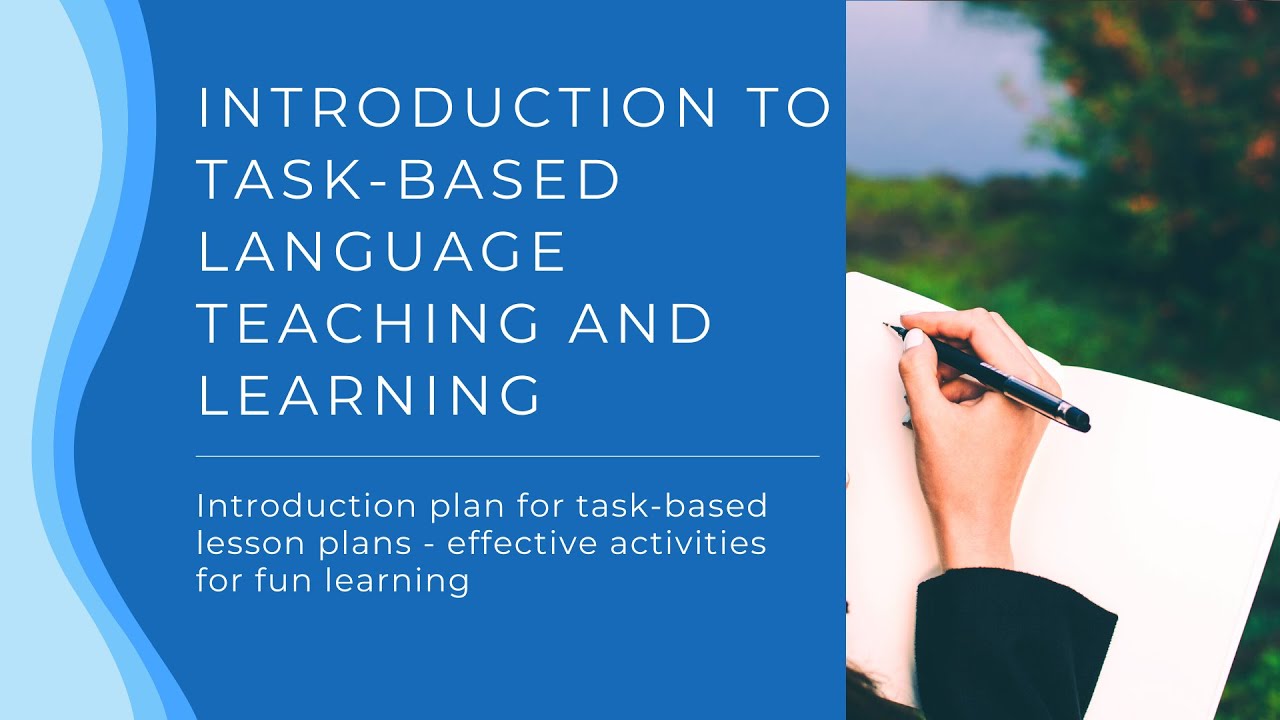
Introduction to Task-Based Language Teaching and Learning | ...
22K views · Nov 22, 2022 eslspeaking.org
Task based teaching is a great teaching process for your ESL students. Try out task-based learning in your English classes and I'm sure you'll see some great results. It's a nice change of pace from the usual presentation-practice-production (PPP) style of English teaching lesson plans. Task-based language teaching and learning is an effective way to teach and your students will respond to the process in a positive way. It engages students and keeps it interesting for you as well. Here's an introduction video to get you started on task-based teaching methods! --------------------------- More information about task-based ESL lessons: https://eslspeaking.org/task-based-language-learning/ -------------------------- Check out these task based ESL activities: https://www.youtube.com/watch?v=nktnwp040Ng -------------------------- Want to find out more about task based teaching? 39 Task-Based Language Teaching and Learning Activities: https://amzn.to/3uJOttS Even more Ideas for the TEFL Classroom: https://eslspeaking.org/ https://www.facebook.com/eslspeaking https://www.pinterest.ca/eslspeaking/ #teachingenglishwithjackie #teachingenglish #tefl #esl #efl ------------------------ Task-based teaching demo from @International TEFL Academy https://www.youtube.com/watch?v=59XMhMO0FMU&t=2s ------------------------ Transcript: Today I'm going to talk about task-based teaching for language teaching. I'm an English teacher. You can use task-based teaching and learning for a variety of different subjects but I'm a language teacher so that's what I'm going to talk about. First of all, what is it? So task-based teaching is when students have to complete a task in groups and the focus is on the completion of that task and the process that students used in order to get there. The focus is less on the actual language that is being used but the emphasis is on communication. This kind of fits into the wider range of more communicative-focused activities as opposed to things like grammar translation that are kind of more old school. So the traditional kind of ESL lesson these days is often PPP (presentation practice production) where the focus is all about students getting the correct language. You present the language, they practice the language, and then they produce the language. And the target or the focus is a hundred percent on accuracy. Whereas task-based teaching, students can use really any language they want and the focus is more on communication. So here are my five reasons why you might consider using task-based teaching in your language classes. The first one is a why. Students have a specific, concrete task that they need to accomplish in your class. When you're doing PPP style lessons, students are producing language but they might not have a real reason why they need to use that language. In a task-based lesson, hopefully, that gives students a reason to use English or to use the new language that they're studying because they have to complete this certain task. The other thing I like about task-based teaching is the students can learn what they want to learn. I try to give quite a degree of flexibility in terms of the task types that I choose and students are able to choose what's interesting to them. They can research more, find out more, and ask me about the language they want to know. Students are working in groups to complete something and the teacher is more of a guide or a little bit of a mentor or a resource as opposed to the all-knowing guru who's at the front of the class presenting the language. The fourth reason why I like task-based activities is that it focuses on group work. I know some students don't love group work but I think in terms of language learning, it might be the best way forward. It can be quite motivating. Students get a chance to practice speaking in English with their group to find out if they're understood or not. Alright, the last one is students are able to focus on meaning. So if you're communicating with someone in a language that's your own or even not your own, another language, meaning is most important. Can the person you're talking to understand you? If yes, then you probably have been quite successful. If not, then you need to go back and say it again or say it in a different kind of way so that people can understand you. Timestamp 0:00 Intro 0:19 What is task-based teaching? 0:54 What about PPP? 1:28 A reason to do something 1:57 Students learn what they want to learn 2:24 Student-centred 2:41 Focus on groupwork 3:22 Focus on meaning vs accuracy 4:33 Conclusion Tags: task-based teaching, task-based learning, task-based language teaching, task-based language learning, task-based language, esl task-based lesson, tefl task based lesson plan, task based lesson plan, task based language esl lesson plan, task based approach, task-based approach language teaching, language teaching methodology, language teaching method
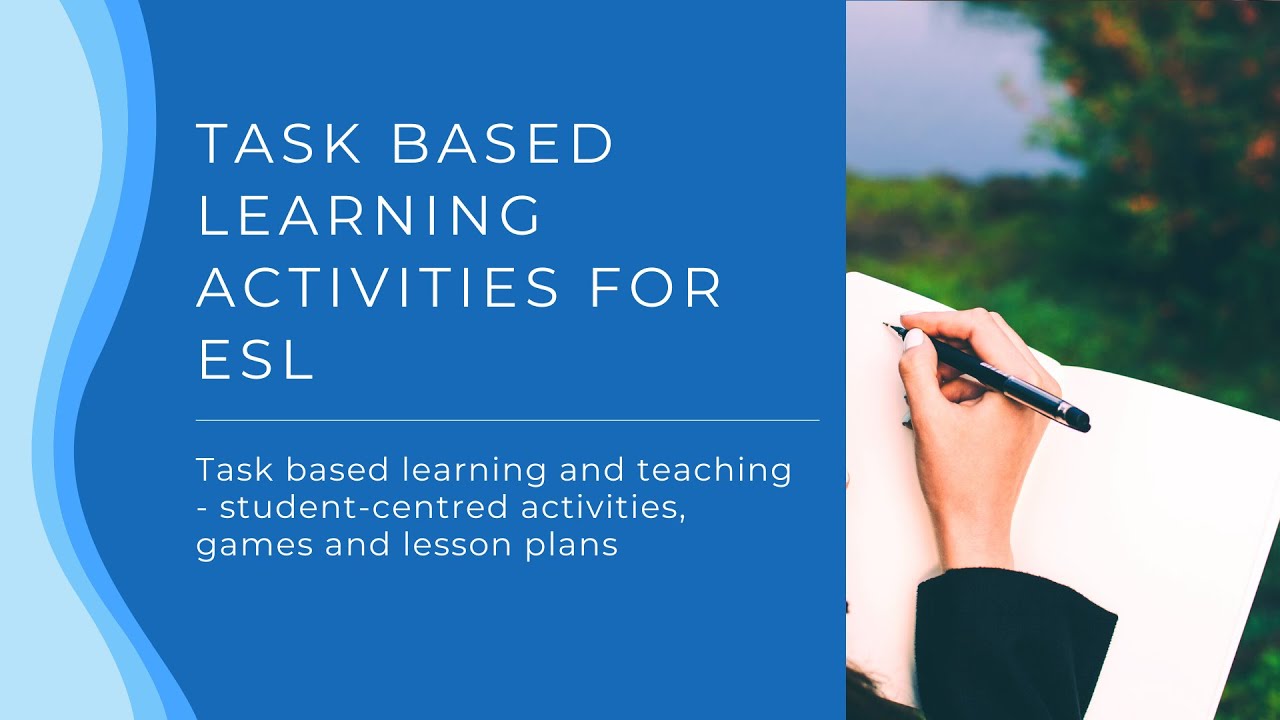
Task Based Learning Activities for ESL | Task-Based Language...
27K views · Nov 22, 2022 eslspeaking.org
Are you looking for some information about task-based teaching and learning, including activities, games, lesson plans and more? Watch my video for some of the top ideas for ESL task based activities! Task-based teaching and learning is a communicative approach that is an effective teaching method. Watch along and find out why you should consider using some task-based language learning activities in your classes today. --------------------------- Try out even more task-based ESL activities: Check out: https://eslspeaking.org/task-based-language-learning/ -------------------------- Check out this introduction to task-based learning: https://www.youtube.com/watch?v=tMHdIDjDYes& --------------------------- Want to find out more about ESL task based activities? 101 ESL Activities: Games, Activities, Practical ideas, & Teaching Tips For English Teachers of Teenagers and Adults (ESL Activities for Teenagers and Adults): https://amzn.to/2QEqH1B Even more Ideas for the TEFL Classroom: https://eslspeaking.org/ https://www.facebook.com/eslspeaking https://www.pinterest.ca/eslspeaking/ #taskbasedlearning #teachingenglishwithjackie #esl #tefl -------------------------------- Learn more about task-based language teaching from @English with Cambridge https://www.youtube.com/watch?v=iLNpGExX4z8 --------------------------------- Transcript: Hey everybody, this is Jackie Bolen from eslspeaking.org. Today I'm going to talk about my top 5 ESL task-based activities. The first one is planning a vacation. So I love to tell my students that my parents are coming to visit their home country. So I did this mostly at universities in Korea so I'd say that my parents from Canada were coming to visit Korea and my students had to plan a vacation for them. I'd give a description of my parents. They like walking but are in their 70's so they can't walk too far, they really enjoy art kind of stuff and being outside. Then I'd put students into groups and have them plan a vacation, a one-week vacation for my parents. The next one is, What are you cooking? Students have to plan a 3-course meal, based on ingredients that other groups select for them. So I get each group to select something like 3 vegetables, 2 fruits, a type of grain, a dairy product, etc. And then when they're done that 3-course meal, they have to make a short presentation to the class. And then the other groups vote on which meal they'd most like to eat. The next one is presentations, group presentations. I've done this in various ways. Some of my favourite ones are about current events and kind of hot topics like environmental issues or global warming, stuff like that. Students have to make a short, very short PowerPoint presentation or a poster and then do a presentation about that. So each person in the group has to talk for 1-2 minutes. You can adjust this depending on the level of your students, of course. And then, in the end, I get other groups to give feedback on that and then there's a question and answer time. I usually encourage participation by giving out bonus points to groups who ask good questions to the other groups, pay attention and ask good questions. The fourth task-based activity to consider are information gap activities (https://www.youtube.com/watch?v=quJnHU7HWCA). There are a ton of them. Basically, they are when one student has half the information and the other student has the other half. Students have to communicate with each other to get the full set of information. A classic one would be two maps, a city map. One student knows where the bank is, the other one knows where the library is and they have to ask each other questions to fill in the complete picture of the map. Be sure to check my website below and I have, I think I have 25 information gap activities listed so be sure to have a look. The final task-based activity I like to do is planning a class party. I put students into groups, give them a budget and then they plan whatever end-of-the-year class party they would like. In the end, the other students in the class vote on the party they think sounds most interesting and fun and then if at all possible, I actually like to do that activity or that party with my students. Sometimes it's more feasible than others so just depending on your context, it can be kind of a nice, motivating activity because students have certain ideas about what they want for a class party so if they can plan it, they usually really enjoy that. Those are my task-based activities to try out.
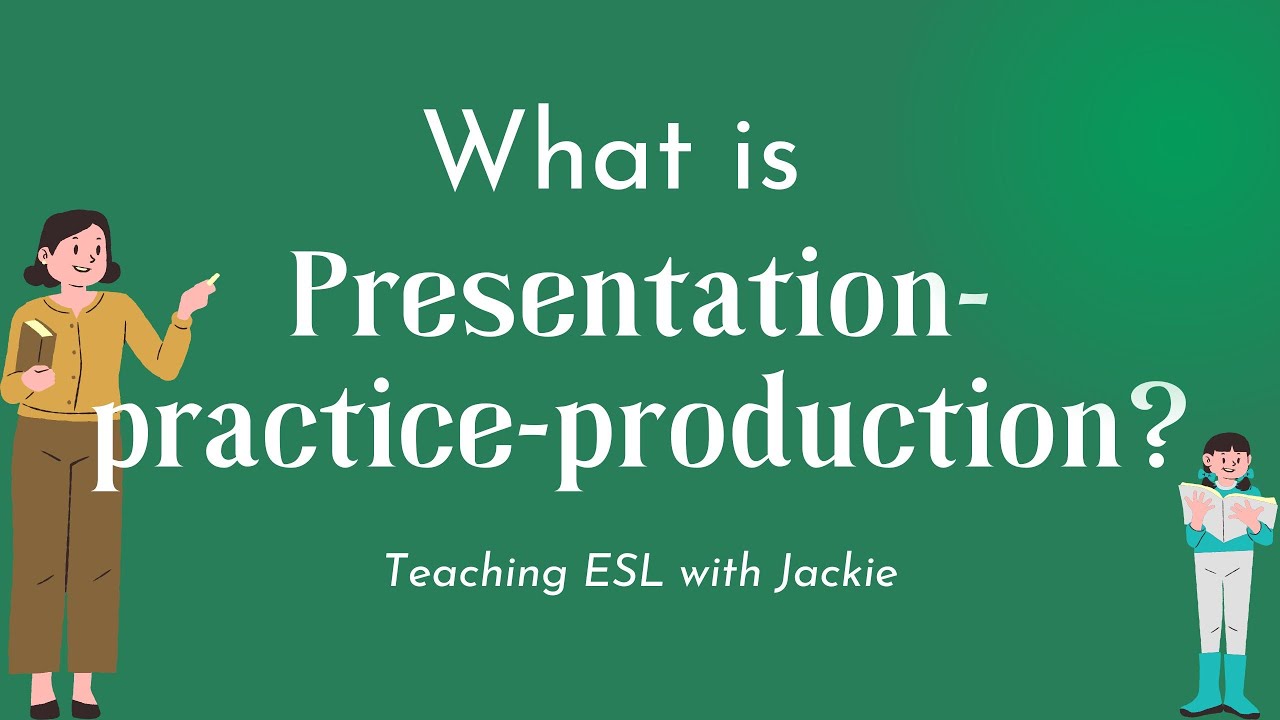
What is the Presentation practice production (PPP)? | Approa...
9K views · Nov 22, 2022 eslspeaking.org
Presentation – Practice – Production, or PPP, is a method for teaching structures (e.g. grammar or vocabulary) in a foreign language. Watch the full video to learn how to teach the Presentation practice production method. It's the most common way to teach English or any other language and it's how most ESL/EFL textbooks are organized. Find out how how to use PPP in your English classes and how to plan this kind of lesson easily. ------- • Check out this blog post for more details on the PPP method, plus three more teaching method https://eslspeaking.org/approaches-methods-language-teaching/ • If you liked this video, find my teaching playlist here: https://youtube.com/playlist?list=PLL0Q8kr18oQKFDBcKGvNh_av3em-Byajj ------ Check out my Tips for Teaching ESL/EF book: https://amzn.to/3PgRsla https://www.facebook.com/eslspeaking https://www.pinterest.ca/eslspeaking/ https://www.instagram.com/jackie.bolen/ https://www.tiktok.com/@englishwithjackie?lang=en #esl #teachingenglishwithjackie #teachingmethod ------------------------------------------------------- Even more Ideas for the TEFL Classroom: https://eslspeaking.org/ -------------------------------------------------------- Timestamp 0:00 Intro 0:12 Step 1: Presentation 0:37 Step 2: Practice 1:04 Step 3: Production 1:29 Conclusion Transcript for PPP What is presentation practice production? It's also called PPP. It's a very common way to teach a language. The first step, presentation is when the teacher presents some aspect of the language. For example, the simple past. So you could talk about using the simple past, irregular verbs, regular verbs, question forms, negative forms. that kind of thing. And you could also give some situations in which students could use the simple past (https://www.youtube.com/watch?v=BBsjFT_J9eo&). For example, talking about a memory, talking about their high school days, talking about a past vacation, what they did the previous night. Something like that. The next step is practice. This is when students will do some exercises in the textbook or a worksheet or something like that. The key is that it's very controlled. Students might just have to fill in a blank or make a sentence or answer a question. It's usually done through writing. When I get my students to do this, I have them first do the writing exercise and then they can pair with a partner and then we just check answers quickly together as a class. The final step is production. So this is a little bit freer. This is when I play a game or activity or I get students to have a discussion with a partner. And they are free to use the simple past in kind of whatever way they wish, as long as it makes sense and it's reasonably correct in terms of forms. Okay, so that is presentation practice production. It's often what you'll see in most ESL or EFL textbooks. If you like this video, please be sure to check out my book, Tips for Teaching ESL/EFL. I'll put the link up there and hit like, subscribe, and leave a comment and tell me whether you like this approach to teaching English or if you prefer something else. Tags: Presentation practice production, Presentation practice production method, Presentation practice production teaching, Presentation practice production way, PPP, PPP teaching, PPP method, methods in teaching, language teaching method, first day of class, class planning, Language Teaching, methods in teaching English, methods in English, teaching grammar, English grammar,
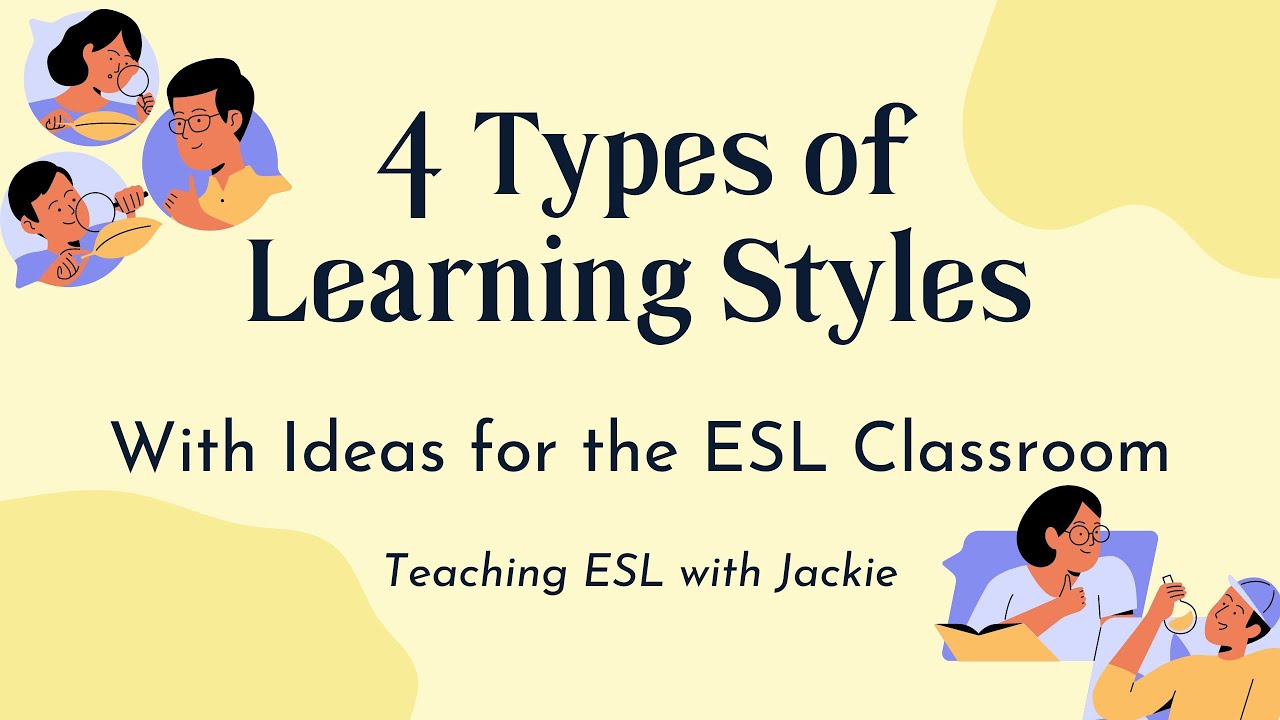
4 Types of Learning Styles With Ideas for the ESL Classroom ...
53K views · Nov 22, 2022 eslspeaking.org
The four core learning styles in teaching English include visual, auditory, reading and writing, and kinesthetic. Here’s an overview of all four learning style types, how to teach them and ideas on how to use them in the classroom. Considering the various learning styles in a language learning lesson will serve students very well! Watch the full video to learn what the 4 Types of Learning Styles are! ------- • Check out this blog post for more details on the different types of learner styles: https://eslspeaking.org/types-of-learning-styles/ • If you liked this video, watch my Top 10 Tips for New English Teachers video here: https://youtu.be/GWMt1djgszQ • If you like this video, find out what learning type YOU are in a video by @Clipboard Classes https://youtu.be/qcCtPgzlGTs ------ Check out my Tips for Teaching ESL/EF book: https://amzn.to/3PgRsla https://www.facebook.com/eslspeaking https://www.pinterest.ca/eslspeaking/ https://www.instagram.com/jackie.bolen/ https://www.tiktok.com/@englishwithjackie?lang=en #esl #teachingenglishwithjackie #learningstyle ------------------------------------------------------- Even more Ideas for the TEFL Classroom: https://eslspeaking.org/ -------------------------------------------------------- Transcript for the four types of learning styles: I will talk about the four types of learning styles and then a few tips or ideas for language classrooms. The four types are visual, which means you learn best by looking at something. The next one is auditory which means you learn best by hearing something. The next one is reading and writing so you learn best by reading and then writing. And the last one is kinesthetic so you learn best by doing something. For visual Learners, you could have picture cards, timelines, different colours, that kind of thing. So one thing that I love to do for visual Learners is if I'm teaching a grammar point that's related to time, I'll draw a timeline like: now, past, and future and draw some arrows and it really helps students understand. For example, I've been to Japan. That means I've been to Japan at some time in the past but the exact time is unknown so you can really use a timeline to help students understand and that kind of thing. The next one is auditory. These students learn best by hearing and talking so things like group discussions or students can talk with a partner about the answers to a question. Things like tones, word emphasis, and a focus on pronunciation (https://www.youtube.com/watch?v=f16dysNivaU&) really can help these students. For people who like reading and writing, things like homework assignments or a reading-focused lesson is ideal for them. For the kinesthetic learners, I like to have something like a secret box or a bag and I have little objects in there and students have to reach inside and then feel around and they can describe what they're feeling. I feel something long. I feel something soft. That kind of thing and they can even pull out one object and then describe it to the class and then say what it is. Another thing you can do for kinesthetic learners is taste testing. If you're talking about food, you could bring in some common foods like some grapes or a piece of apple, a piece of chocolate. That kind of thing and you can do a blind taste test and have students describe how it tastes and then also guess what it is. Those are the four different types of learning styles and how you might try to cover kind of all those styles within your ESL lesson. Timestamp 0:00 Intro 0:14 Learning styles overview 0:32 Visual 1:07 Auditory 1:24 Reading & Writing 1:31 Kinesthetic 2:28 Conclusion Tags: 4 Types of Learning Styles, kinaesthetic learners, learning styles evaluation, core learning system, analytical learner, visual learning meaning, visual tactile learner, hearing learning, learning styles, 4 learning styles, class planning, Language Teaching, methods in teaching English, methods in English, visual learner test, learning strategies types, vak learning,
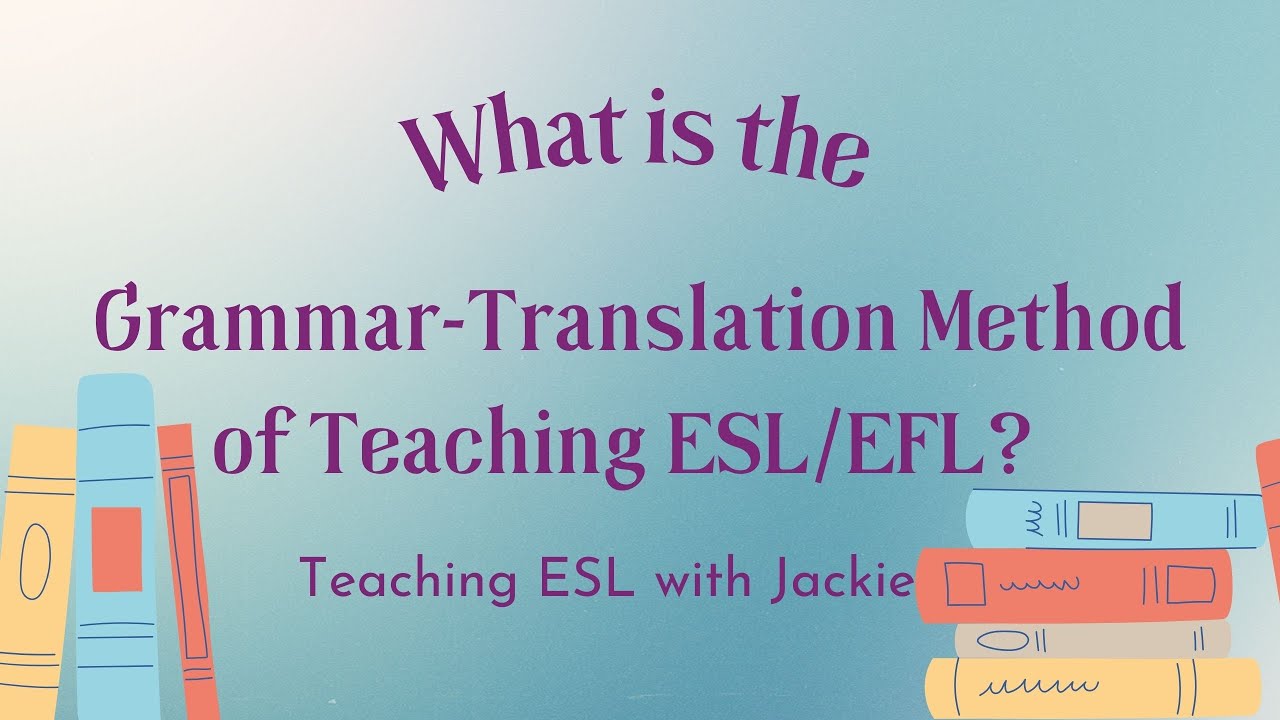
What is the Grammar-Translation Method of Teaching ESL/EFL?:...
7K views · Nov 30, 2022 eslactivity.org
Blog post for more information on language teaching methods including the grammar translation method: https://eslspeaking.org/approaches-methods-language-teaching/ Teaching a foreign language can be a challenging but rewarding job that opens up entirely new paths of communication to students. It’s beneficial for teachers to have knowledge of the many different language learning techniques including ESL teaching methods so they can be flexible in their instruction methods, adapting them when needed. Sometimes that means using something like the grammar/translation method. Keep on watching for the Grammar-Translation Method! It's an old-school language teaching approach that all language teachers should be aware of. Want to find more Low-prep/No-prep ESL activities? Check out my book: https://amzn.to/3uAchAM https://www.facebook.com/eslspeaking https://www.pinterest.ca/eslspeaking/ https://www.instagram.com/jackie.bolen/ https://www.tiktok.com/@englishwithjackie?lang=en #esl #teachingEnglish #teachingenglishwithjackie Timestamp 0:00 Intro 0:11 What is the grammar-translation method? 0:35 Where to find the grammar-translation method 0:56 Origins of the G.T. method 1:03 What's the goal? 1:19 Focus on vocabulary and grammar 1:49 Today = Communicative approach 2:05 Conclusion Transcript: Hi, this is Jackie from esleaking.org. Today I'm going to talk about, What is the grammar-translation method of teaching ESL/EFL/teaching English , whatever you call it. The grammar-translation method is very old school and it's kind of fallen out of favour. You'll actually find very few teaching English programs or schools that follow this method. I've personally really never seen that in my years of teaching English. You might run across it in kind of a translation program or if someone is studying, for example, biblical Hebrew or biblical Greek. The teachers might teach in this way but that's kind of the only place you actually might see it. But, it's good to know where we've come from to the newer methods but this is kind of where it all got started. So it actually derived from Latin and Greek teaching methods from hundreds of years ago. The goal was to read and translate foreign texts. People would get started with reading actually quite complicated texts and they kind of dig deep into like the grammar of each sentence and then the different vocabulary words, conjugations and that kind of thing. The focus was on studying vocabulary lists and then also going into very detailed explanations about the grammar points. The focus was not on communication and pronunciation and it was quite common that these people who use that method could study a foreign language for years and maybe never be able to actually communicate with someone even in a simple way, despite being able to read and understand very very complicated materials in that language. These days, the focus is way more on communication so being able to convey your message and talk to somebody, go to a store and order something, tell a taxi driver where you want to go, those kinds of things which is often why you won't really see the grammar-translation method. All right, so for some tips and tricks and games and activities for teaching in kind of the newer way be sure to check out 39 No-Prep/Low-Prep ESL Grammar Activities. Tags: esl, teaching esl, english, learning english, english teacher, learning language, ESL kids, TEFL classroom, classroom tips, TEFL, efl, tefl, teaching English, teaching teenagers english, teaching kids english, ESL teaching jobs, TESOL, no prep lessons, low prep lessons, easy lesson plan, simple lesson plan, esl writing, esl reading, reading language, reading english, CLT, TPR, Audio-Lingual, Direct teaching method, grammar translation, grammar translation method
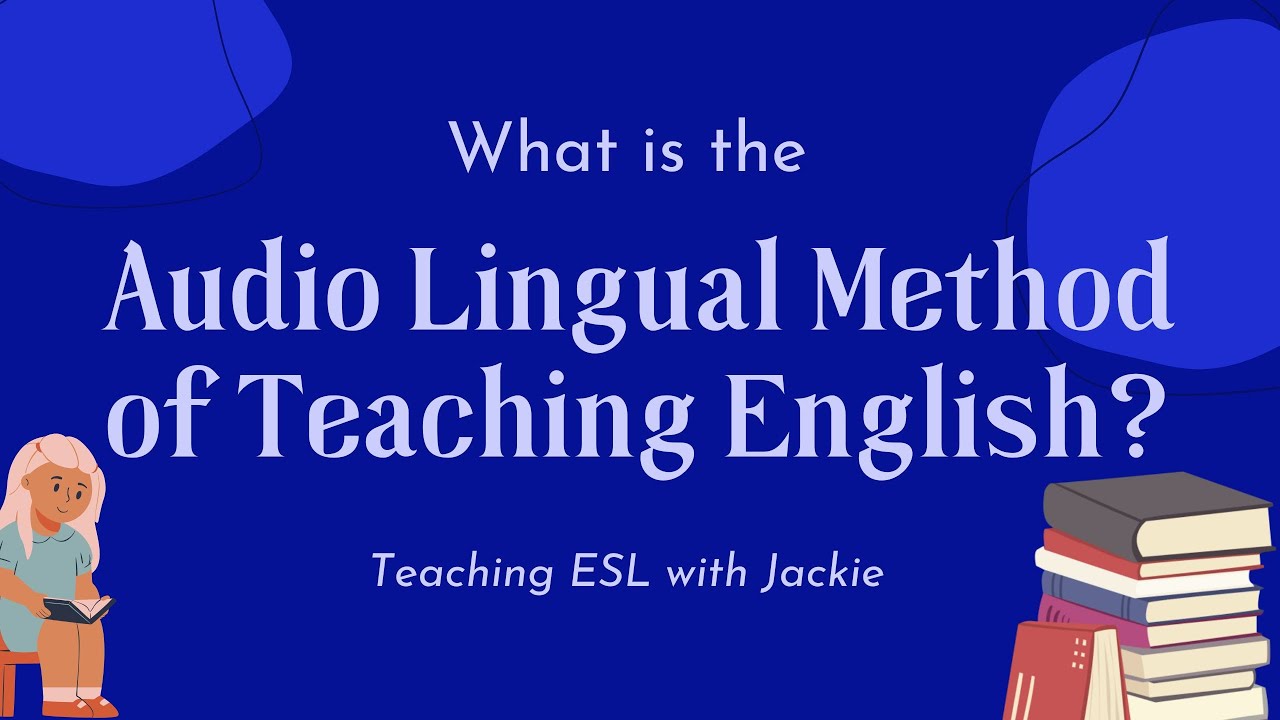
What is the Audio Lingual Method of Teaching English? | Appr...
7K views · Nov 30, 2022 eslactivity.org
The audio-lingual approach encourages students to develop habits that support language learning. Students learn primarily through pattern drills, particularly dialogues, which the teacher uses to help students practice and memorize the language. These dialogues follow standard configurations of communication. Keep watching this video to learn all about the Audio Lingual Method of Teaching English ------- • Check out this blog post for more details on the different approaches in learning styles: https://eslspeaking.org/approaches-methods-language-teaching/ • If you liked this video, watch my 4 Types of Learning Styles With Ideas video here: https://youtu.be/zc3F-gfHE80 • If you want to learn more about Audio Linguslism, watch this video by @internationaltefltraining https://youtu.be/905Lgz-K00U ------ Check out my Tips for Teaching ESL/EFL book: https://amzn.to/3PgRsla https://www.facebook.com/eslspeaking https://www.pinterest.ca/eslspeaking/ https://www.instagram.com/jackie.bolen/ https://www.tiktok.com/@englishwithjackie?lang=en #teachingenglishwithjackie #learningenglishwithjackie #audiolingualmethod ------------------------------------------------------- Even more Ideas for the TEFL Classroom: https://eslactivity.org -------------------------------------------------------- Transcript for the Audio Lingual Method of Teaching Language: I'm going to talk about what is the audio-lingual method of teaching or learning a language. So this method is a little bit old school. However, you still will see it these days on many of the language learning apps because it really is an ideal way to learn a language if you're by yourself, just kind of in a few minutes of spare time that you might have. So there are a few key features of it but the main thing it tries to do is form a habit. It uses patterns, drills, and dialogues to try to achieve this. So there are four different types of dialogues. The first one is repetition. The teacher would say a pattern and then the students would repeat it. And then the next type of dialogue or pattern is inflection. This is where the teacher would say the pattern and then they would have the students repeat it and then they would change one word within that pattern and students would repeat it. The next kind of dialogue is replacement. This is more student-led. The teacher would say a pattern and the students repeat it and then they would change one word in that pattern and then say it out loud for themselves. Finally, the last one is restatement. This is where the teacher would say a sentence and then students would have to say that sentence or that pattern in a different way. Okay, so that's kind of the basics of the audio-lingual method. It begins with speaking and listening and then it later moves into writing or reading. Please leave a comment and tell me if you've ever learned a language or seen any language apps that would kind of use this audio-lingual method and how it worked out for you. Timestamp 0:00 Intro 0:35 Four types of patterns 0:38 Repetition 0:44 Inflection 0:59 Replacement 1:12 Restatement 1:22 Conclusion Tags: Audio Lingual Method of Teaching English, audio lingualism, audio lingual, teaching method, approach method and technique in teaching english, approaches of language teaching, audio lingual method, audiolingual, english teaching methodology, method of language teaching, method of english teaching, types of teaching approaches, methods and techniques of teaching,
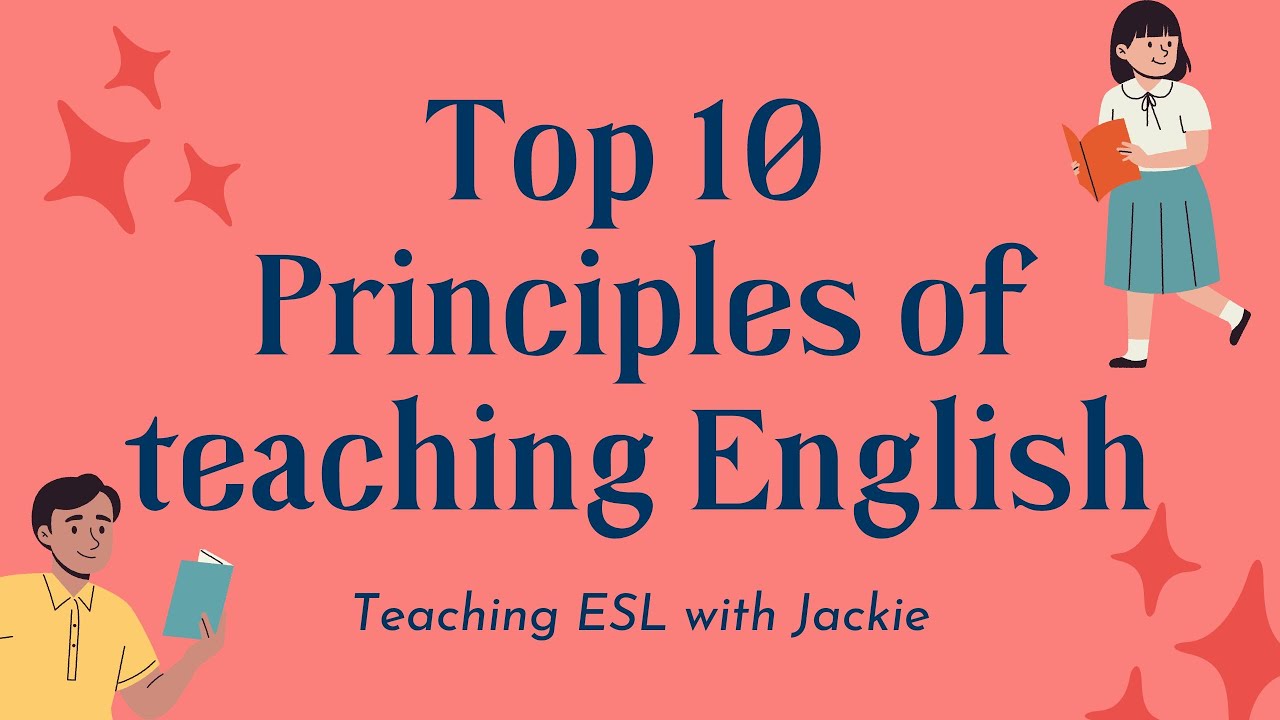
Top 10 Principles of Teaching English | Teaching English Lan...
57K views · Sep 5, 2023 eslactivity.org
Are you an ELL (English Language Learner) teacher searching for ESL teaching strategies? If you’re looking to level up your English teaching, then you’re certainly in the right place. There are a ton of tips for teaching English language learners that are going to help make you a better teacher, and of course, your students will be happier too! Continue watching for 10 principles of teaching English ------- • Check out this blog post for more details including worksheets, and lesson plans for this unit: https://www.eslactivity.org/tips-for-teaching-ell/ • Want an in depth video on teaching the principles of English? Watch @LetsLEARN2016 video "Principles of English Language Teaching" here: https://www.youtube.com/live/1qWe5o2kzGY?feature=share • Want a video on extra tips for teaching English learners? Watch that here: https://youtu.be/fcqZX2e_-J0 ------ Check out my book ESL/EFL Teaching Practice and Methodology here: https://amzn.to/3CFNEWs https://www.facebook.com/eslspeaking https://www.pinterest.ca/eslspeaking/ https://www.instagram.com/jackie.bolen/ https://www.tiktok.com/@englishwithjackie?lang=en #teachingenglishwithjackie #teachingenglish #teachingtips -------------------------------------------------------- Transcript: Here are my top 10 principles for teaching English or for teaching any language for that matter. The first one is to pay attention to chunks of language. If you have students learn each single word at the individual level, it will be quite difficult to actually remember a lot of stuff. However, as students learn things like phrasal verbs idioms, or common sayings or expressions, it can be much easier for them to remember. The second principle is to make language meaningful. This means that students should be learning things that has meaning for them. The next one is to find out what kind of motivation your students have and tap into this intrinsic motivation. You can do only so much inside the classroom for your students. You can teach them effectively, you can try your best, but in reality if students want to learn a language a lot of that learning is going to happen outside the classroom. The next principle is to use class time wisely. Unless you're teaching in some kind of like very intensive situation and you're with your students for 30 or 40 hours a week, most language teachers only teach their students for say like two to five or six hours a week. The next principle I have is that confidence is key to any language learning. Language learning involves taking risks and just putting on a little bit of a new identity. I always try to practice positive reinforcement instead of negative reinforcement. The next one is the students have to take risks in order to improve their skills. The only way you really learn how to play a sport or a musical instrument a language is through taking risks and making mistakes and when making those mistakes. The next principle of teaching that I have is competence. Competence involves two different things. The first one is fluency, which is how fast you can talk or read or write, and then accuracy which is like the correct word choice in your grammatical structures. Keep both in balance The next principle I have is that in class or when students are studying it should involve a mix of both input and output. Input is listening and reading, output is speaking and writing. I try to have kind of a balance of all four of those things in my class along with some grammar and vocabulary kind of mixed in. The next principle is to Monitor and assess your students. This can happen formally in terms of like a test or it can happen just kind of informally when you're walking around the class during an activity and seeing what kind of mistake students are making and giving a little bit of feedback. The final principle that I have I left to the last because it's actually the most important, is to make classes student-centered. I'm already quite good at English, I'm a native speaker and I've taught English for many years, so I actually don't need a ton of practice in speaking English. It's my students that need practice. Timestamp: 0:00 Intro 0:05 Pay attention to chunks of language 0:43 Make language meaningful 1:08 What motivates your students? 1:35 Use class time wisely 2:00 Confidence is key to language learning 2:38 Students should take risks 3:19 Competence 4:00 Have a mix of input and output in class 4:23 Monitor and assess your students 4:56 Make classes student-centered 5:42 Outro Tags: Principles of Teaching English, Principles of Teaching Language, Principles of Teaching, esl tips, tips for teaching esl, tips for esl teachers, esl tips for teachers, teaching ell, esl teaching tips, ell tips, tips for teaching english language learners, how to teach ell students, esl best practices, teaching esl student,
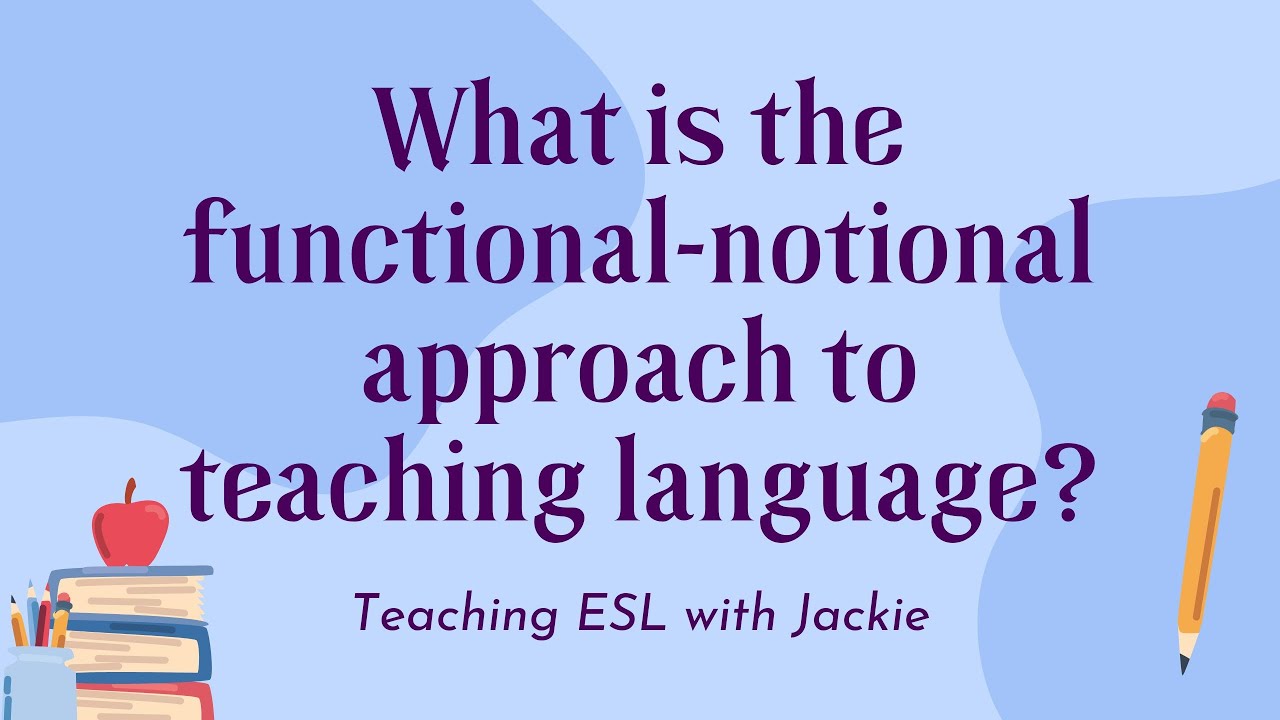
What is the functional-notional approach to teaching languag...
109K views · Sep 5, 2023 eslactivity.org
What is the functional notional approach to teaching language? In this video, I go over the key aspects of this teaching methodology and activities you can use to utilize this teaching method. Continue watching for all the details on the functional-notional approach to teaching language. ------- • Check out this blog post for more Teaching Language Methods and Approaches: https://www.eslactivity.org/teaching-language-methods-approaches/?expand_article=1 • Want another video on teaching adults? Watch @NormasTeaching video "Teaching Adults English: Your First Lesson" here: https://youtu.be/h6BbL81jA8Y • What is the Suggestopedia Language Learning Method? Watch that here: https://youtu.be/spN4IpbMd-o ------ Check out my book ESL/EFL Teaching Practice and Methodology here: https://amzn.to/3CFNEWs https://www.facebook.com/eslspeaking https://www.pinterest.ca/eslspeaking/ https://www.instagram.com/jackie.bolen/ https://www.tiktok.com/@englishwithjackie?lang=en #teachingenglishwithjackie #teachingenglish #teachingtips -------------------------------------------------------- Transcript: Timestamp: 0:00 Intro 0:08 What is it? 0:57 Key ideas 1:00 Needs analysis 1:08 Context is everything 1:26 Use authentic materials 1:46 Student autonomy 2:03 Assessment 2:16 Activities for this teaching method 2:37 Outro Tags: functional notional, functional notional teaching method, functional notional approach, approach method and technique in teaching english, approaches and methods, what is language teaching, approaches to language learning, method of language teaching, english approach, english teaching methodology, techniques of language teaching, english teaching methods, teaching methods in english, approach in teaching english,
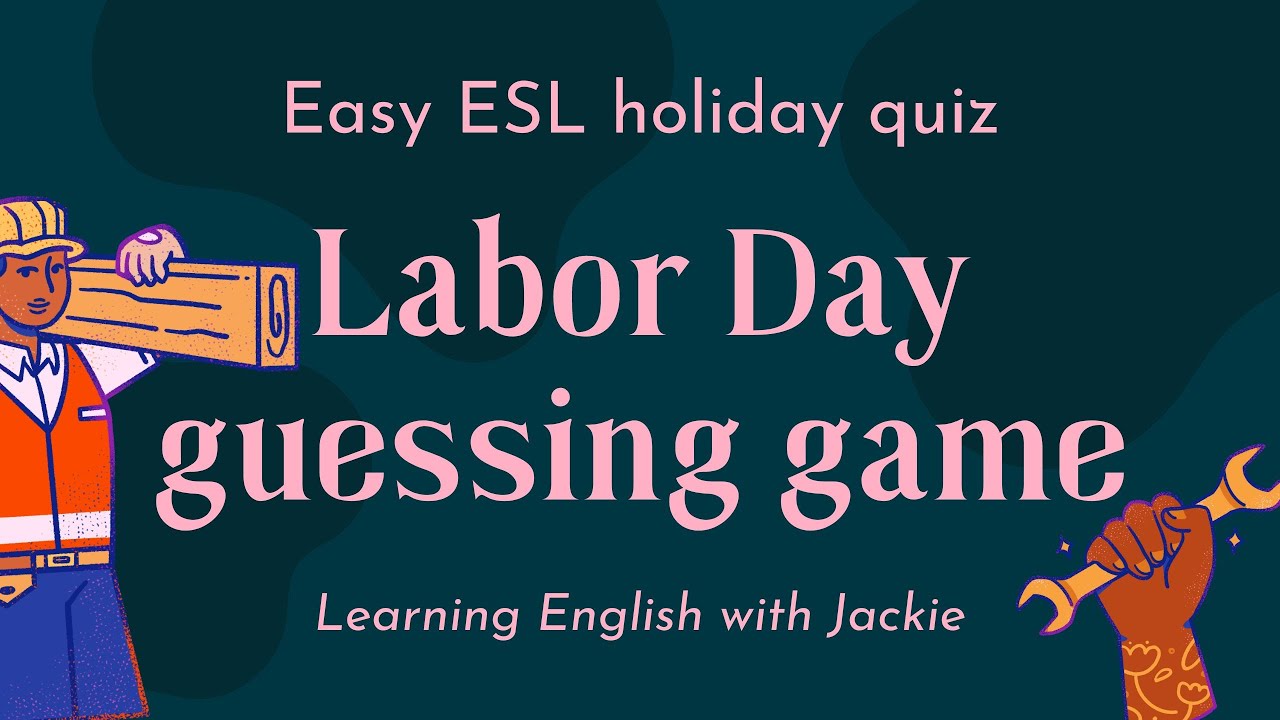
Labor Day Guessing Game for ESL students | Fun ESL Holiday G...
3K views · Sep 5, 2023 eslactivity.org
Labor Day has now been observed for many years now not only in the U.S. but also in many other countries of the world. But do you know enough about this holiday? If you think you do, just try out our interesting quiz on Labor Day and answer the simple questions provided here. Even if you are not too familiar with the event, you can at least give this quiz a try and enhance your knowledge on Labor Day. Tell us what new information you learned about this holiday. Also, be sure to like this video and subscribe to our channel for more holiday teaching resources like history, vocabulary, quizzes, activities, and lesson plans. ------- • Full blog post for ESL Holiday Lessons: Games, Activities, Worksheets & Resources: https://eslspeaking.org/esl-holiday-lessons/ ------- Other types of ESL Holiday Activities: • Valentine's Day History and Fun Facts: https://youtu.be/5WnOC3Zir-s • History of Thanksgiving Day: https://youtu.be/L-Jn0DDGMok • Another labor day video by @ksmartkids https://youtu.be/w1n5fkAJ-s8?si=RvshBz1ZTLSXpy5M https://www.facebook.com/eslspeaking https://www.pinterest.ca/eslspeaking/ https://www.instagram.com/jackie.bolen/ https://www.tiktok.com/@englishwithjackie?lang=en #teachingenglishwithjackie #learningenglishwithjackie #englishquiz #labourday ------------------------------------------------------- Even more Ideas for the TEFL Classroom: https://eslspeaking.org/ -------------------------------------------------------- Timestamp 0:00 Intro 0:06 Instructions 0:16 Question 1 0:36 Question 2 0:56 Question 3 1:17 Question 4 1:36 Question 5 1:55 Question 6 2:15 Question 7 2:36 Question 8 2:56 Question 9 3:16 Question 10 3:38 Outro Answer Key Q1) Which color is prohibited from being worn after Labor Day? (White) Q2) Labor Day is considered the unofficial end of Hot Dog season (TRUE) Q3) What day is Labor Day observed? (First Monday of September) Q4) Currently, there is no labor day parade in New York City. (FALSE) Q5) The first labor day was celebrated on (5th September 1882) Q6) True or false: Americans worked 12-hour a day seven days every week during the 19th century. (TRUE) Q7) Why is labor day celebrated? (To celebrate the achievements of workers) Q8) Which country was the first to make Labour Day Official...Canada or the United States? (United States) Q9) Mexico is believed to have originated the idea of hosting a day honoring the labor movement. (FALSE) Q10) This state was the first state of the United States to make it an official public holiday. (Oregon) Tags: esl holiday lessons, esl holidays, holidays esl, esl holiday, esl holidays worksheets, esl holiday vocabulary, holiday lesson plans, labor day quiz, labour day quiz, labor day trivia questions and answers, labor day trivia pdf, labor day trivia questions, labor day trivia questions answer, labor day quiz, labour day quiz, labor day trivia, labor day marks the end of, labor day fun facts, labor day fact,
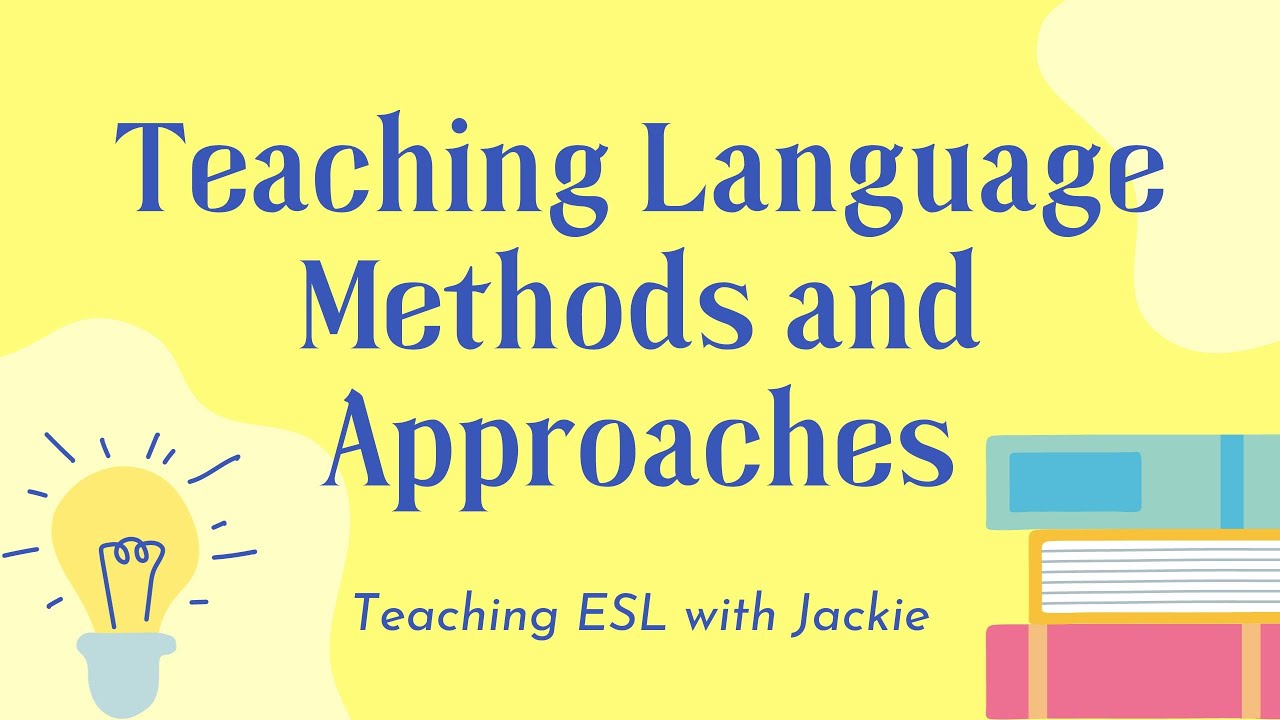
Teaching Language Methods and Approaches | A Teacher master ...
80K views · Oct 24, 2023 eslactivity.org
There are various teaching language methods and approaches that have been used throughout history. And there are certainly some, including the communicative language approach and task-based learning approach which are all the rage these days. Keep on watching this ultimate video for all the details you need to know about these older methods as well as the newer options, including communicative language teaching, task-based learning, the situational approach, the grammar-translation method, the direct method, suggestopedia, and more! ------- • Check out this blog post for more Teaching Language Methods and Approaches: https://www.eslactivity.org/teaching-language-methods-approaches/?expand_article=1 • Want another video on teaching adults? Watch @NormasTeaching video "Teaching Adults English: Your First Lesson" here: https://youtu.be/h6BbL81jA8Y • Want individual Language Learning Method videos? I have an entire playlist here: https://www.youtube.com/playlist?list=PLL0Q8kr18oQKFDBcKGvNh_av3em-Byajj ------ Check out my book ESL/EFL Teaching Practice and Methodology here: https://amzn.to/3CFNEWs https://www.facebook.com/eslspeaking https://www.pinterest.ca/eslspeaking/ https://www.instagram.com/jackie.bolen/ https://www.tiktok.com/@englishwithjackie?lang=en #teachingenglishwithjackie #teachingenglish #teachingtips -------------------------------------------------------- Timestamp: 0:00 Intro 0:02 The Functional-Notional Approach 2:45 The direct method 5:18 Suggestopedia Language Teaching Method 7:13 The Grammar translation method 9:26 Audio-lingual approach 11:04 The structural approach 12:34 The Bilingual Method 16:21 The Situational Approach 18:00 Test-Teach-Test (TTT) 20:14 Presentation Practice Production (PPP) 21:59 What is micro-teaching? Tags: situational approach in teaching english, approaches and methods, clt method, approaches and methods in language teaching, techniques in language teaching, language teaching techniques, approach and method in language teaching, methods of teaching language, approaches of language, approaches and methods of teaching english, best method of teaching english, method of teaching language, language teaching methods and approaches, approaches in teaching english, teaching methods and approaches, types of approach in teaching,